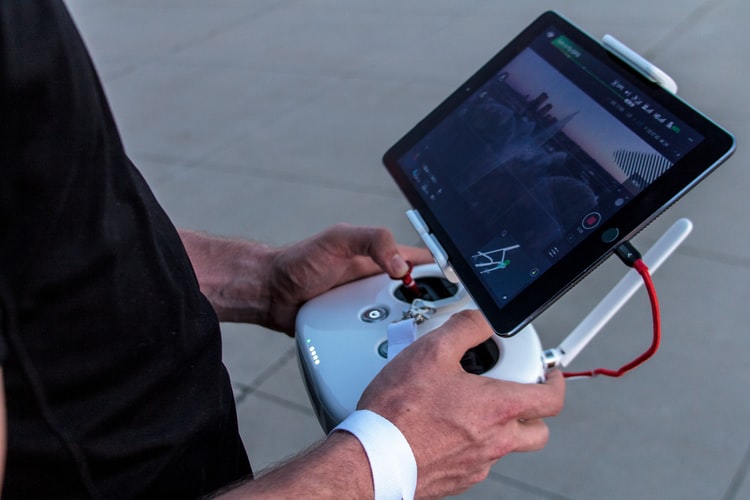The last talk of the Day 2 “Leveraging Computer Vision In Drone Tech” was presented at the Computer Vision conference of the year, CVDC 2020 by Animesh Dutta, who is the Machine Learning Developer at Kesowa.
CVDC 2020 is scheduled for 13th and 14th of August, organised by the Association of Data Scientists (ADaSCi), the premier global professional body of data science and machine learning professionals.
Dutta kick-started the talk by discussing the ecosystems of drones and how drone tech is evolving quite rapidly by leveraging emerging technologies like artificial intelligence, deep learning, autonomy and unmanned aerial systems.
Regarding the ecosystem, Dutta mentioned some of the important components which constitute a drone ecosystem. They are-
- Hardware, which includes delivery systems, drone platforms, drone-in-a-box, VTOL fixed-wing, passenger drones, counter drones, components & systems, among others.
- Software, which includes flight, fleet & operation management, open-source infrastructure, navigation, Computer Vision & AI, LAANC suppliers, data analytics, among others.
- Services such as delivery, drone-as-a-service, simulation & training, maintenance, market places, coalitions, initiatives, among others.
The speaker then discussed the steps that are required to build a drone by showing an example of a drone that is built in-house by Dutta and his team at Kesowa.
Talking about the drone, Dutta discussed the data flow for streaming of the drone along with some of the hardware and software components that were used while building the drone.
The hardware components used are-
- One Quadcopter frame
- Four sets of motors
- One LiPo battery
- Flight controller option, such as Pixhawk 2.4.8 32bit ARM RC
- GPS module
- RC receiver-transmitter set
- ESC-battery bullet connector
- Landing gear
- Camera as per requirement
The software components used in the above-shown drone are-
- QGCS or any other open-source ground stations.
- MAVLINK
- Mission planner
- Stable Internet
- GPS at all times
- RTMP protocol to feed video to the server.
After discussing a brief view on how one can build a drone from scratch, Dutta explained what Computer Vision is and the important use cases related to drones including how drones can help monitor crowds during the pandemic situation.
Some of the use-cases mentioned are-
- Leveraging emerging technologies to create and deliver solutions to strengthen governance.
- Detecting anomalous behaviour in the crowd. Using Bayesian Loss for crowd count estimation with point supervision helps to generate a density map showing humans.
- Drones can be used to deliver items from one location to another. Using Computer Vision techniques, one can detect potholes on the road, find corrosion in towers and bridges, among others.
- Drone data can also be in the form of a tiff file. One can calculate the NDVI value and compute the vegetation cover area in that region.
Talking about the pandemic situation, the speaker put forward the following points-
- Drones can be used to calculate the density of people in a particular place. If the threshold for density exceeds and people are not maintaining social distancing, measures were taken.
- The megaphones on the drones connected to the cell phones of the police officers will allow them to simply dial in and make their announcements.
- Drones are being used for dropping off medical supplies and personal protective gear to healthcare workers in order to spray disinfectant over public spaces like airports, railway stations, among others.
- Drones fitted with thermal scanners can identify potential virus carriers in a crowd.
As an instance, Dutta showed the crowd density estimation by a drone using Computer Vision, which was deployed to help battle COVID-19 in April 2020.
He said, “Crowd counting is a very interesting task and challenging as well. There are two main difficulties involved, which are variation in human size due to the perspective and overlap & occlusion in a dense crowd.”
He also mentioned a research paper by Zhiheng Ma and team, who proposed a novel Bayesian loss function which constructs a density contribution probability model from the point annotations.
Lastly, Dutta concluded the talk by discussing some of the important topics of Computer Vision, which are crucial while building a drone with emerging technologies. The topics included an explanation of Mak R-CNN, steps of detecting rooftops using Mask R-CNN, Faster R-CNN, Region Proposal Network (RPN), Region of Interest (RoI), Normalised Difference Vegetation Index (NDVI), autonomous drone flights using generalised autonomy aviation system (GAAS), among others.

























